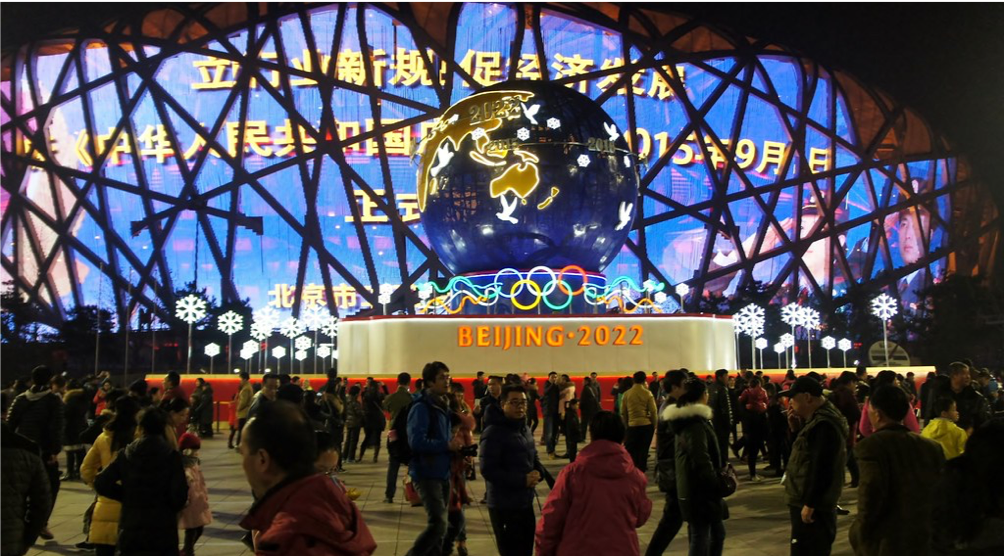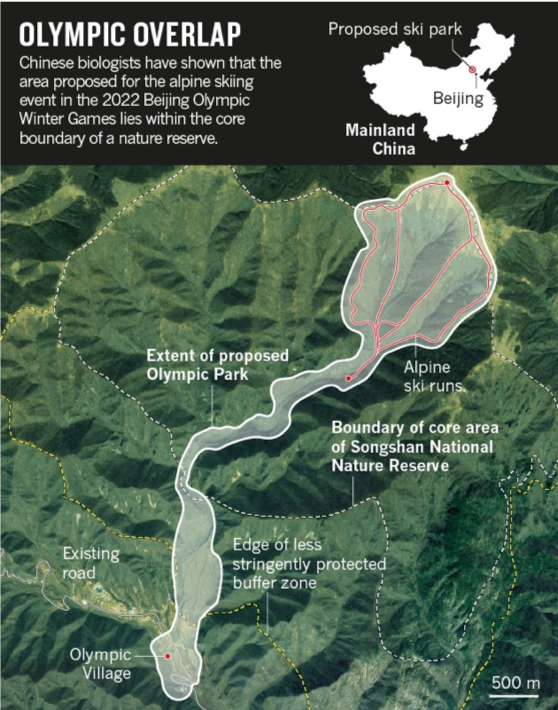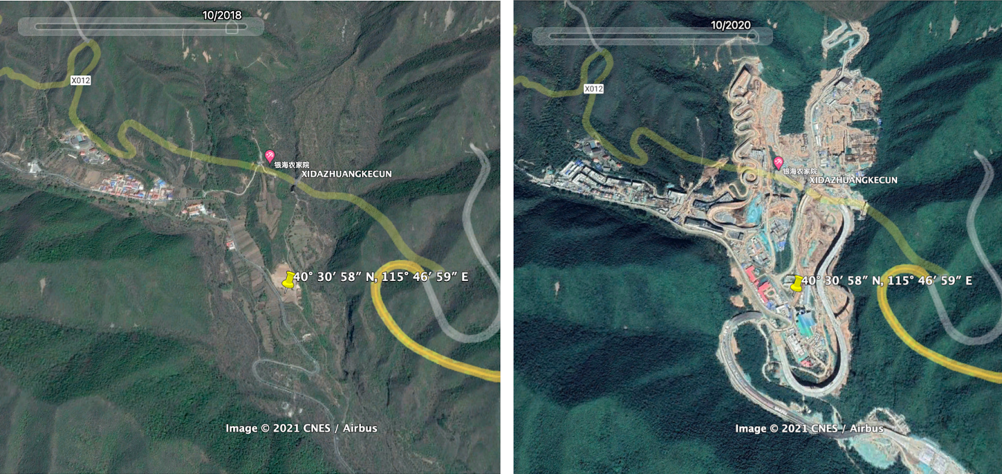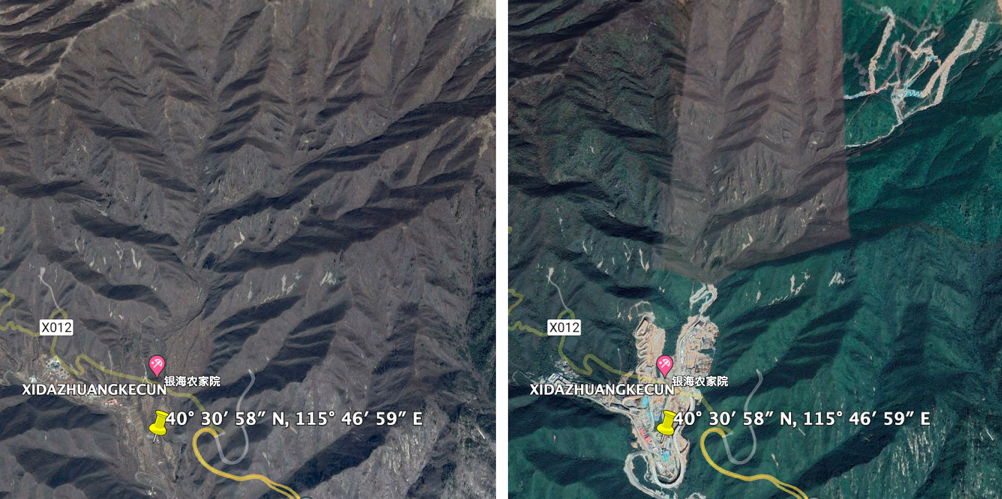
The Beijing 2022 Winter Olympics, which will open in a month, are supposed to be an eco-friendly event. But will China achieve this goal or will it be yet another missed opportunity?
The 2022 Winter Olympics will be the greenest ever! That is what the organizers of the Beijing Games promised. They even released a Sustainability Plan, in May 2020, that outlines the way they were going to proceed to achieve this goal. But the Games are starting in less than a month – from 4th to 20th February – and 300 yellow snow guns are already blowing artificial snow on the slopes. Not that eco-friendly after all! These materials use a large amount of water and can lead to erosions, scientists say. They can also accelerate the artificialization of the soils. So what is the real environmental impact of the 2022 Olympics games?
In 2015, China won its bid to host the Winter Olympic Games and announced its intention to hold the bobsleigh and alpine skiing races on the Mountains of Xiaohaituo, in the Yanking area, 90 kilometres northwest of Beijing. But there was a slight problem: the future ski resort was going to be established in the Songshan National Nature Reserve, the natural habitat of many rare plant species. According to biologists, this plan was going to endanger the Shanxi orchid (Cypripedium shanxiense), classified at the highest level of protection in Beijing’s conservation system. The habitat of some birds could have also been destroyed.

Source : Wang Xi/Songshan Natl Nature Reserve/2022 Beijing Olympic Winter Games Committee
Regardless of this warning, Beijing went through with the project. However, the boundaries of the reserve were changed in 2015, so that there would be no more overlap with the slopes. This modification was made without consulting the public and did not follow any ecological assessment, even though they are mandatory.
Goodbye nature
In 2019, the construction of a National Sliding Center and an Alpine Skiing Center – which will host bobsleigh, skeleton, luge and alpine skiing events – began. Eleven kilometers of ski trails were laid out in the forests. Roads and constructions were build and many kilometers of pipes were buried to carry the water needed to create artificial snow. Just for alpine skiing, 432 hectares were mobilized out of the 4671 hectares of the nature reserve, that is to say, almost one tenth of its surface.
An Olympic village was also built nearby, resulting in the artificialisation of nearly 64 hectares of nature. The first photograph below was taken in October 2018, before the establishment of the Olympic Village. The next one was taken two years later: 64 hectares have been artificialised to welcome the athletes. The artificialisation of this zone is unprecedented.

The village of Yanqing is one of the three Olympic villages of the 2022 Olympic Games.

On the right, in 2020, the ski slopes were built in the area of the original natural reserve (on the left in 2015). Source : Google Earth Pro.
100 % artificial snow
For the first time in the Winter Olympic’s history, ski trails were covered with 100% artificial snow. Even though fake snow has long been used during the games – in the 2018 Pyeongchang Winter Olympics Games, they used 90 % of fake snow – this is a turning point.
The area chosen by Beijing is reputed for its dryness. It was therefore easy to anticipate the scarcity of snow come the Winter Games and even more obvious to forecast the use of snow machines. 300 in total. According to organizers, these machines don’t damage the environment. They said that “the water used to make snow contains no chemical additives and when it melts, the water will naturally re-enter the soil.” Furthermore, snow-makers work on sustainable electricity.

This picture shows how artificial snow covers the surroundings.
If all goes according to plan, the danger that might result form using products such as Snomax, an additive that allows snow to stay longer but disturbs the balance of soils will be null. But other risks exist.
Artificial snow and snow guns have evident impact on the environment. They operate with water, a large amount of it: 185 million litres, according to research in 2019. In the Yanqing Competition zone, where Alpine skiing events will be staged, 1.6% of water is used in the area, according to the Beijing Water Authority. And in the Zhangjiakou Competition zone, where freestyle skiing, snowboarding, cross-country skiing, biathlon and ski jumping events will take place, the water demands during the Games accounts for 9.8% of the total current water consumption in Zhangjiakou’s Chongli District.
Another impact on nature is erosion. Anne-Sophie Demers, an expert on this matter confirms that the use of fake snow – which is thicker – causes erosion. She explains how in Canada this type of snow affects the entire hydraulic system. Indeed, according to this specialist, erosion leads to an increase of sediments in the groundwater so it affects the natural water quality. It can be dangerous for the population because this water can be used by the community to drink. Another research, « Environmental risks and impacts of mountain reservoirs for artificial snow production in a context of climate change », also shows that groundwater can be affected.
For environment specialists like Carmen de Jonc from the University of Strasbourg, the games are simply an « aberration ».
Lolla Sauty-Hoyer, Lou Surrans and Eléa Tymen.
BLACK BOX
For this investigation, we decided to focus on the supposed eco-friendliness of the Winter Olympics Games. We had several leads but most couldn’t be followed because of a lack of resources. Chinese organizers control what is published about the infrastructure and the Games in general. So, we decided to use tools such as Google Earth Pro and Calc Map to see with our own eyes and calculate the evolution of the constructions. By comparing surfaces, we observed an important artificialisation, especially in protected areas. We also examined scientific articles on Google Scholar, OpenEdition Journals and on different media in order to know more about fake snow and its impact. In order to translate some of those articles, we used DeepL. And finally, we searched on social media to see how people, organisations or specialists reacted on this subject. We found out on Weibo, a Chinese social media, that some comments or posts were erased because they questioned the organizers’ decisions.
